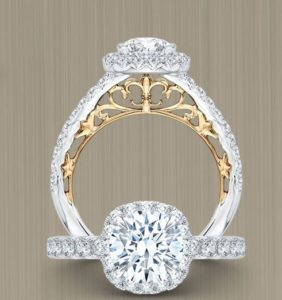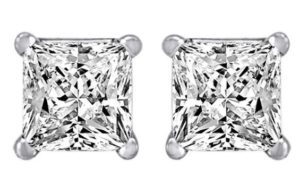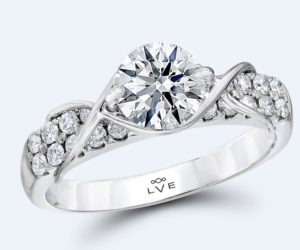Navigating a Rough Market
“These are strange and difficult times for the diamond industry,” hails Jon C. Phillips, GG, CG, market analyst for The GemGuide, GemWorld International. In a nutshell: there’s too much rough in the marketplace and it’s too expensive based on polished outcomes; polished is too expensive based on current selective demands and high inventories; the industry is overleveraged; and markets in Asia are slow amid local policy changes and stock market declines.
 “Recently, we’ve seen some select areas of the diamond market weakened or in flux, but we’re now seeing an overall downward slide of prices and demand for both rough and polished,” says Phillips. “The traditionally stable, unique supply and demand model of the diamond market has been severely shaken to reflect new values and needs. The increasing downward pressure on prices has analysts wondering if it’s merely a long overdue onetime correction or permanent change where pricing is dictated by actual market economics versus the oligopolistic style pricing system we’ve had up to now.”
“Recently, we’ve seen some select areas of the diamond market weakened or in flux, but we’re now seeing an overall downward slide of prices and demand for both rough and polished,” says Phillips. “The traditionally stable, unique supply and demand model of the diamond market has been severely shaken to reflect new values and needs. The increasing downward pressure on prices has analysts wondering if it’s merely a long overdue onetime correction or permanent change where pricing is dictated by actual market economics versus the oligopolistic style pricing system we’ve had up to now.”
According to The GemGuide, polished prices were the first to react to the slowing demand and oversupply with declining prices throughout the year, some areas trading as much as 10% less than this time last year. Rough prices have seen some declines from 3% to 4%, but not enough to make the cutting and polishing of most rough profitable. “The mines have finally recognized the potential for a market disaster and have recently tried to ease market pains,” cites Phillips. “They’ve always manipulated values by changes in parcel mixes or reducing the quantity of carats sold, but now they’re allowing refusals or deferrals.”
Diamond manufacturers are tired of losing money on polished goods and are more circumspect about what they manufacture, says Leslie Lew, vice president of MWI Eloquence, New York. “It’s challenging because prices are relatively high, although weakened. There is a disconnect that has exacerbated between the price of rough and polished. People are buying less rough, closing cutting factories and laying off workers. As diamonds get consumed, inventories will level off, and certain in-demand items will be in short supply.” He cites oval diamonds as selling well, “prices are strong but that’s because production is way off.”
During the time gold and diamond prices were high retailers were buying lots of jewelry and stones, reminds Grant Mobley, vice president of sales, Simply Diamonds, a Jewelmark company, New York. “That was a boom for five years and jewelers were left with a lot of inventory that they’re finally selling off.”
The industry is just starting to find its foothold, adjusting to changes in the distribution channel, says Neil Shah, CFO of Shah Luxury, New York, who notes that the demand is there, it’s just a matter of things shaking out on the supply side. The U.S. remains the most active consuming market for diamonds. He sees the market stabilizing by the middle of next year with demand strong long-term, advocating that building brands and relationships are most important to success.
Adding Value
Given the challenging climate, the commodity generic diamond business is tough, with all the competition from the Internet and other retailers. “It offers no margins and independent jewelers especially don’t have the leverage on prices the big players do,” says Rob Bates, diamond market analyst and senior editor for JCK magazine, who advises jewelers carry something different. “If you just do what everyone else does, you’re in trouble. Jewelers need to have something to say about their diamonds that makes them stand out, whether they have a specific cut, new designs, are branded, or have a socially conscious origin.”
 Competition for consumers’ dollars is so fierce jewelers must add an imperative to buy, advocates Russell Shor, senior industry analyst for GIA. “Fresh designs with a distinctive look at medium price points are a good place to start. The basics of excellent service and product knowledge also remain essential.” He notes that consumers are turning away from luxury for luxury sake. “Ostentation is out. Value and purpose are in.”
Competition for consumers’ dollars is so fierce jewelers must add an imperative to buy, advocates Russell Shor, senior industry analyst for GIA. “Fresh designs with a distinctive look at medium price points are a good place to start. The basics of excellent service and product knowledge also remain essential.” He notes that consumers are turning away from luxury for luxury sake. “Ostentation is out. Value and purpose are in.”
Key values to promote, highlights Rebecca Foerster, executive vice president of strategic planning and marketing for Leo Schachter Diamonds, New York, include: innovation and uniqueness, authenticity and reassurance, and customer involvement in the process.
But above all, sell the beauty of the stone, says Derek Palmer, global marketing director for Pluczenik, New York, otherwise it’s just another commodity. He notes that most consumers come to a jeweler with a basic knowledge of the 4Cs, but beauty is not reflected in diamond grading. He advises that while grading certificates add confidence, jewelers should not depend on them to sell diamonds.
Chain of Custody
Bates encourages jewelers only buy from dealers they trust 100%. “There are all sorts of the scams out there, synthetics disguised as naturals, and we just heard about moissanite mixed into natural diamond parcels. Don’t take chances; safeguard your reputation, and get things tested if you are not sure, particularly if you buy something off the street.”
Jeff Weinman, executive vice president of sales for Tache USA, New York, stresses the importance of adhering to and promoting the Kimberley Process that documents stones are conflict free and from reputable sources. He also advises jewelers join, and pressure their suppliers to commit to RJC (Responsible Jewellery Council), a not-for-profit, standards setting and certification organization. Heavy hitters like Sterling are requiring its vendors belong.
In fact, Martin Rapaport, chairman of the Rapaport Group and founder of the Rapaport Diamond Report, advocated in his State of the Diamond Industry address at JCK Las Vegas that hallmarked products from certified companies could provide a unique value-added proposition that attracts premium prices. He predicts demand for this product with certification or hallmarking will increase.
 Some consumers believe diamonds are all-profit, tells Shor, easily extracted from the ground and sold for huge markups. “Tell them that maintaining an environmentally responsible diamond mine that pays fair wages is a costly undertaking, which is how the majority of diamonds in the market today are mined.” Emphasizing the incredible history of diamonds is paramount to selling them, concurs Foerster. “It’s really important to tell the story of the many hands that have brought this beautiful, symbolic gem to market. Stop talking about price; start talking about the beauty, journey, and meaning behind the stone.”
Some consumers believe diamonds are all-profit, tells Shor, easily extracted from the ground and sold for huge markups. “Tell them that maintaining an environmentally responsible diamond mine that pays fair wages is a costly undertaking, which is how the majority of diamonds in the market today are mined.” Emphasizing the incredible history of diamonds is paramount to selling them, concurs Foerster. “It’s really important to tell the story of the many hands that have brought this beautiful, symbolic gem to market. Stop talking about price; start talking about the beauty, journey, and meaning behind the stone.”







